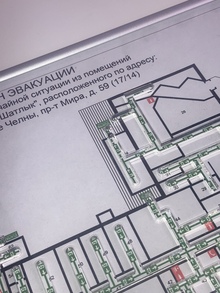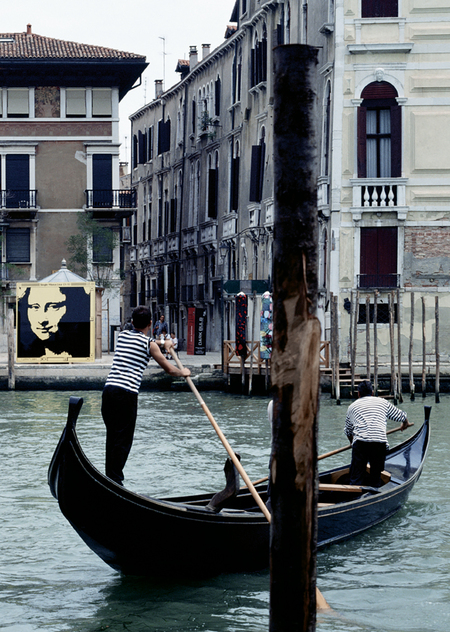
Mona Lisa Travels. IX. A venetian interlude: Mona at rest
DAVID GALLOWAY
A VENETIAN INTERLUDE: MONA AT REST

In 1998, Mona Lisa became George Pusenkoff’s portable muse and tireless traveling companion along the highways and byways of his native Russia. Seven years later — the magical time-span of fairytales — she ascended into the heavens with the Italian astronaut Roberto Vittori. (Was it sheer coincidence that he possesses the good looks of an Italian film star? Or — more appropriately, perhaps — those of a fairytale prince?)
The astronaut thus became the first man to sleep legally with Mona Lisa since she left Napoleon’s boudoir to assume a place of honor in the Louvre.
Another Italian, the immigrant worker Vincenzo Peruggia, who kidnapped the beauty in 1911 and concealed her in a cupboard beside his bed, can hardly qualify as Vittori’s rival. Nor can those who sleep beneath posters of Leonardo’s masterpiece, snuggled between pillows bearing images of La Gioconda, for Pusenkoff’s ingenious reprises have succeeded in restoring to the image something of its original, ineluctable aura. Here the issue is not one of originality but of authenticity.
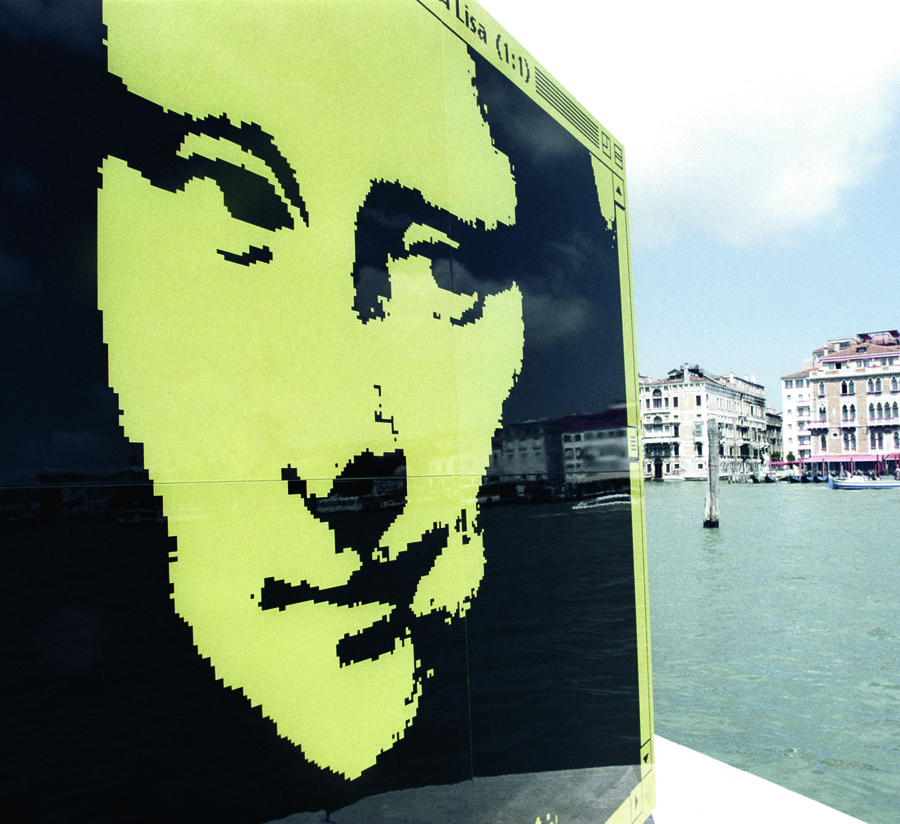
Installation Mona Lisa Goes Venice. Silkscreen on metal, 300×300×5 cm.
51st International Art Exhibition, 2005
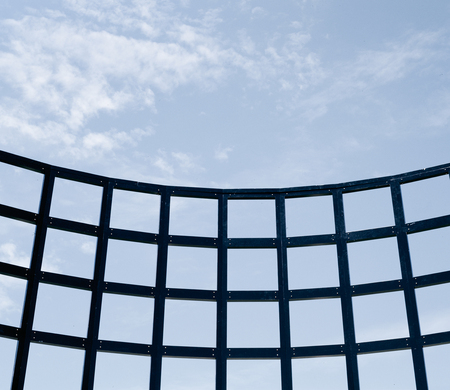
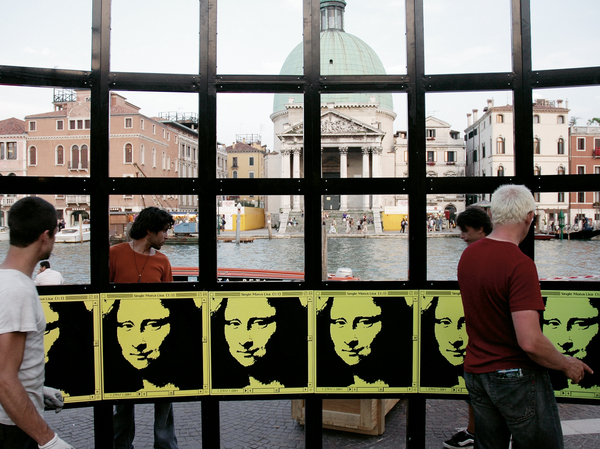
Installation Mona Lisa Time Tower, 51st International Art Exhibition, 2005
Installation of the Mona Lisa Time Tower. Piazza Santa Lucia, Venice.
51st International Art Exhibition, 2005
Following her eventful Wanderjahre, Mona Lisa came to rest for more than five months in Venice, where each and every day tens of thousands of visitors would pay her their homage.
From June 12 to November 6, 2005, Mona Lisa Goes Space constituted one of the principal attractions of the 51st Biennale di Venezia. Light-boxes mounted on the façade of the Santa Lucia train station, since 1846 the principle gateway to the island city, documented the picture’s unprecedented journey to the International Space Station. In front of the Santa Lucia train station and adjacent to the Canale Grande stood Pusenkoff’s imposing Mona Lisa Tower, a roofless structure which visitors could enter to gaze upward past rainbow-colored variations on the Renaissance masterpiece, while a melody based on Leonardo’s own notations played softly in the background.
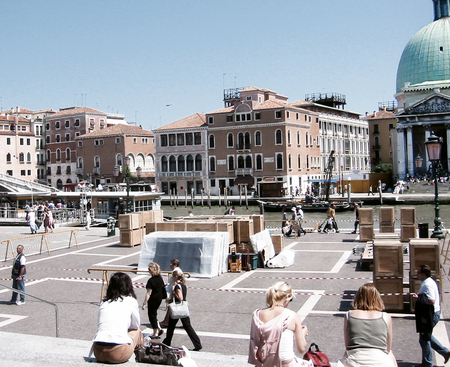
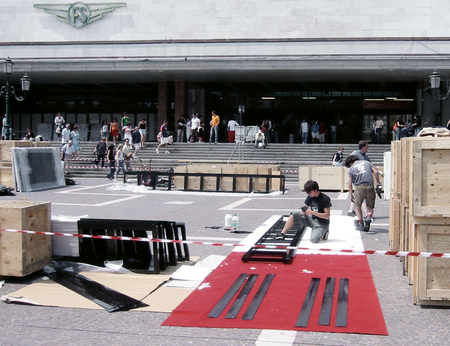
Installation of the Mona Lisa Time Tower. Piazza Santa Lucia, Venice. 51st International Art Exhibition, 2005
Flowing through the city from this location, to the Campo del Ghetto Novo in the north and all the way to the Giardini gardens in the east, seven oversized aluminum panels with a yellow-and-black Single Mona Lisa 1:1 — once more the fairytale number — were dramatically positioned. Measuring 3×3 meters, each was painted in a different yellow tone, thus echoing the chromatic sequences within the tower.
Installation Mona Lisa Time Tower. Aluminum, acrylic lacquer (50 colors), varnish, diameter 10 m, height 6 m. 51st International Art Exhibition, 2005 (courtesy Museum Ritter, Waldenbuch)


Installation Mona Lisa Time Tower. Piazza Santa Lucia, Venice.
51st International Art Exhibition, 2005
The famous traveler had found repose within the swirl of commuters, travelers and art tourists that lend the city its characteristic flair; she became what T.S. Eliot once termed «the still point of the turning world». (In similar fashion, the great Irish poet William Butler Yeats came to see the tower as a symbol of order and harmony among the turbulence of modern life).
The notion of repose was strengthened by the fact that three of the aluminum panels were visible from the water, so that passengers aboard vaporettos or gondolas moved past the familiar icon, as though passing in ceremonial review before the distinguished guest. On the other hand, the fact that Pusenkoff’s Mona Lisa had come to rest after seven years of earthly and heavenly voyaging did not exclude a degree of dramatic nuance in her reception. Visitors to the tower saw themselves reflected in its curved surface, while every alteration of the sky above found its counterpart within the structure. The kaleidoscopic effects were thus in continuous motion, creating unique tableaus that vanished as soon as they appeared — often so rapidly that they can only in retrospect be fully appreciated through the remarkable photographs they inspired.
Photo installation Mona Lisa Goes Space, 27 light boxes, each 120×150×15 cm. Piazza Santa Lucia, Venice. 51st International Art Exhibition, 2005
Montage of the photo installation Mona Lisa Goes Space
The seven yellow-and-black aluminum panels exhibited within the cityscape also had glossy surfaces that underwent more subtle but nonetheless continuous alterations, shifting according to time of day, weather, and passing traffic.
More importantly, each was differently contextualized by the surrounding historic architecture, acquiring in the process a distinct sculptural presence. Unlike the relatively modest 70×70 cm format of Single Mona Lisa 1:1, which Pusenkoff briefly positioned more or less like a stage prop in 500 different settings throughout Russia, the Venetian panels towered over the viewer. Here they were less like props than elements of a stage set whose effect relied on the total mise-en-scène; what resulted was a kind of continuous street theater or happening.
Installation Mona Lisa Goes Venice. Silkscreen on metal, 300×300×5 cm. Campo San Maurizio
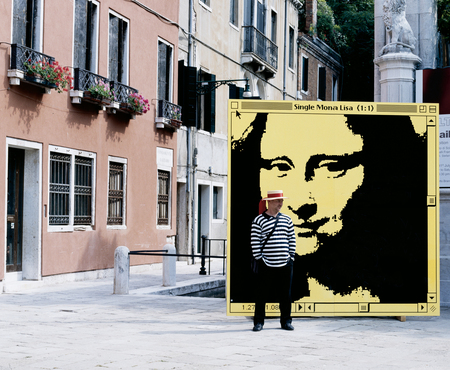
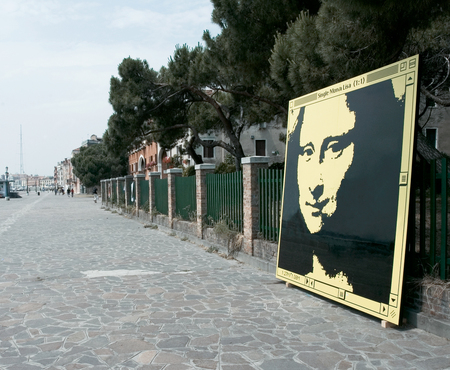
Installation Mona Lisa Goes Venice. Silkscreen on metal, 300×300×5 cm. Left: Campo Santo Stefano. Right: Riva dei Sette Martiri
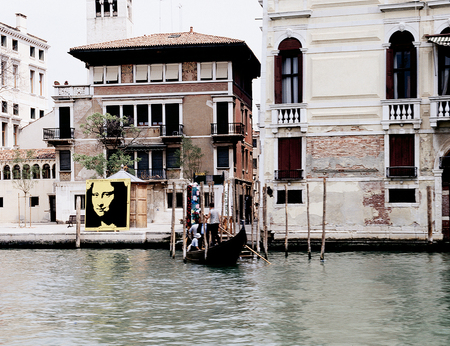
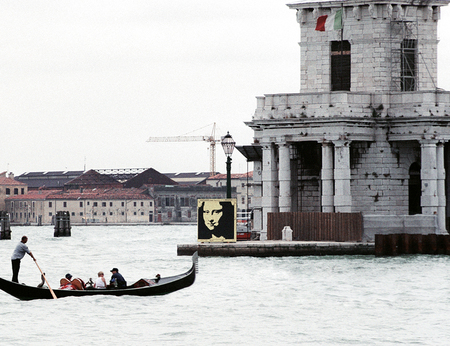
Installation Mona Lisa Goes Venice. Silkscreen on metal, 300×300×5 cm. Left: Campo San Samuele. Right: Punta della Dogana
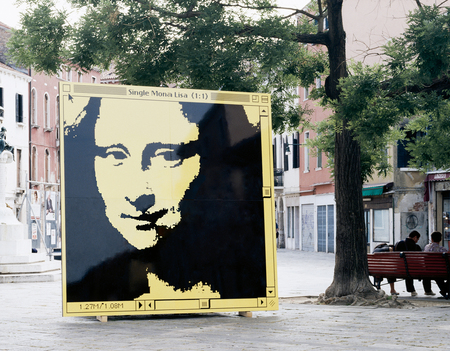
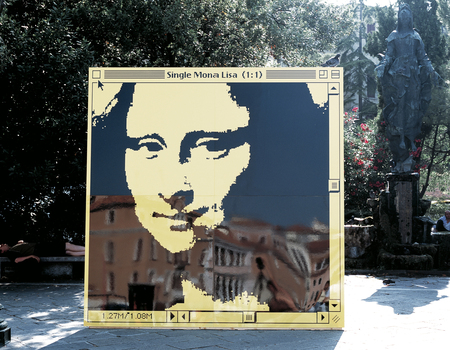
Installation Mona Lisa Goes Venice. Silkscreen on metal, 300×300×5 cm. Left: Campo Santa Margherita. Right: Piazza Santa Lucia
In residential areas, with neighborhood youths playing football under the lady’s benign gaze, the effect was dramatically different than that prompted by the noble Campo Santo Stefano. Viewed from ships entering the Canale Grande, the panel situated at the Punta della Dogana seemed at once like a majestic queen of the sea and a sternly watchful guardian, protecting the city from undesirable intruders. Unfortunately, the undesirable elements already nested within the bosom of the Doges’ ancient capital.
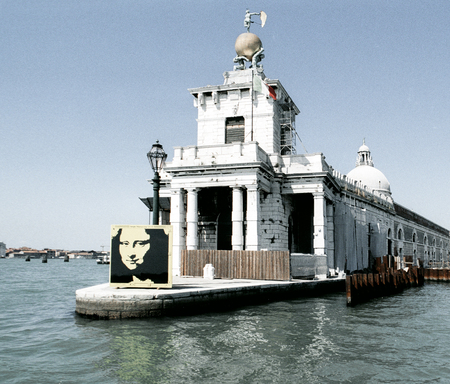
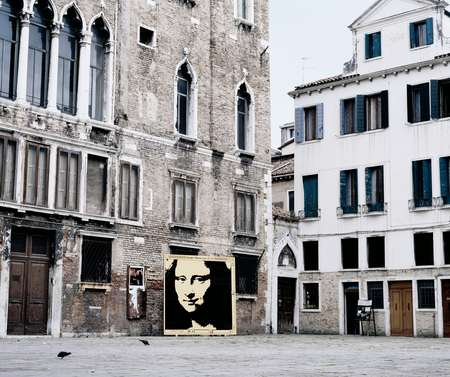
Installation Mona Lisa Goes Venice. 51st International Art Exhibition, Venice, 2005. Left: Punta della Dogana. Right: Campo San Maurizio
From left to right: George Pusenkoff, Roberto Vittori, David Galloway, Gerda Ridler, Marc Scheps, Olga Bisera, Pasquale Di Palermo, Riccardo Panunzi, Nicola Savoretti, Valery Baranov
On the night of June 8th, vandals disfigured the Mona Lisa installed in the picturesque but somewhat decrepit square of Campo Santa Margherita. With ballpoint pens and knives, they subjected the figure to a violent attack, reserving their greatest fury for the figure’s celebrated, enigmatic smile. There was none of the sprayer’s skewed humor or macho bravura here; the aggression with which one knife-wielding vandal stabbed at the image was unmistakable. The perpetrators were never apprehended, though in the course of the following days they would disfigure several other panels, as well.
Mona Lisa had survived a breathtaking journey into outer space, but not a single night on the streets of Venice.
One can only speculate about the motives behind such vandalism. Locals may have seen the work, in its bright and pristine clarity, as an intruder in this ambience of crumbling facades and high unemployment. Perhaps the attackers were angered by the mistaken notion that the installation represented elitist interests, financed by public monies at the expense of much-needed improvements to neighborhoods like that surrounding Santa Margherita. The irony is that with immense energy and engagement, Pusenkoff had personally raised the necessary funds to produce, ship and exhibit his project. (As in the ambitious projects of Christo and Jeanne-Claude, such a procedure is a not insignificant guarantee of artistic freedom.)
Installation Mona Lisa Time Tower at Piazza Santa Lucia. 51st International Art Exhibition, Venezia, 2005
The artist and six white-gloved assistants had also personally installed the works with a speed and efficiency few public institutions could duplicate.
Installation Mona Lisa Goes Venice. Silkscreen on metal, 300×300×5 cm. Installation at seven locations in Venice. 51st International Art Exhibition, 2005
Plainly, there is always an element of the unpredictable when artworks are removed from a fine-arts context and subjected to the vicissitudes of the «real» world. Yet precisely this theater of the commonplace was one the artist had cultivated with great success in Mona Lisa Goes Russia. One might conclude, then, that the vandalism perpetrated at the Campo Santa Margherita was no more and no less than the kind of senseless defacement that has become a commonplace feature of the urban environment and had nothing to do with the art world per se.
Installation Mona Lisa Time Tower at Piazza Santa Lucia. 51st International Art Exhibition, Venezia, 2005
On the other hand, at least one of the iconoclasts at work on the night of June 8th was an initiate of that world, since he did not simply attack at random but used a ballpoint pen to scribble a mustache onto the face, as though intentionally quoting Duchamp’s (in)famous subversion of the image. Shortly thereafter, another cognoscente intervened in the Campo San Maurizio, endowing the Mona Lisa with an even more luxurious mustache and with the motto «It’s not art!»
The allusion to René Magritte, another manipulator of the celebrated image, is unmistakable. (Police speculated, for undisclosed reasons, that the perpetrator was a young American art student.)
Installation Mona Lisa Time Tower at Piazza Santa Lucia. 51st International Art Exhibition, Venezia, 2005
The Venetian vandalism was far from the first occasion on which Mona Lisa was subjected to «the slings and arrows of outrageous fortune» or proved a catalyst for the most contradictory responses. Throughout the centuries she has survived forgery and theft, parody and commercial exploitation, inept reproductions and even the perversity of the coffee mug.
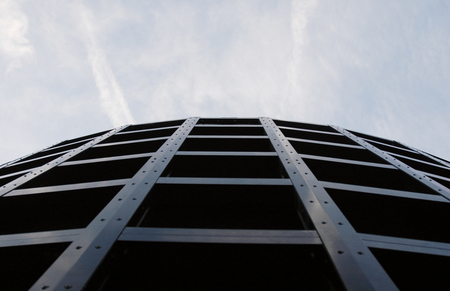
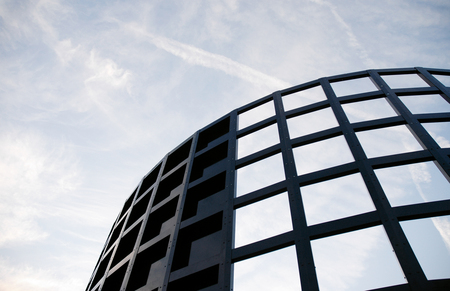
Installation Mona Lisa Time Tower,. Montage, Piazza Santa Lucia, Venice, 2005


Installation Mona Lisa Time Tower, Piazza Santa Lucia, Venice, 2005
As though to compensate for the violence of the streets, throughout the summer and fall of 2005, rainbow images of the celebrated beauty soared aloft in a private tower of near-Byzantine opulence, secure in a city whose famous skyline is accentuated by towers.
Installation Mona Lisa Time Tower (inside), Piazza Santa Lucia, Venice, 2005
Installation Mona Lisa Time Tower (inside), Piazza Santa Lucia, Venice, 2005
Such structures variously suggest safety and watchfulness, defense and retreat; they can embody a reaching toward the heavens or a proclamation of authority, but they can also be sites of isolation and imprisonment. They figure prominently in fairytales, as well, often securing the beautiful princess from the outside world and offering appropriate challenges to her rival suitors. Something of this multifariousness is suggested by George Pusenkoff’s digital reprises on Leonardo’s painting, as well, and by the journeys they have undertaken together. Through it all, the famous face has retained its serene attitude — one that received added dimensions of meaning in the fabled city known as La Serenissima.


Installation Mona Lisa Time Tower (inside), Piazza Santa Lucia, Venice, 2005
Installation Mona Lisa Time Tower (inside), Piazza Santa Lucia, Venice, 2005
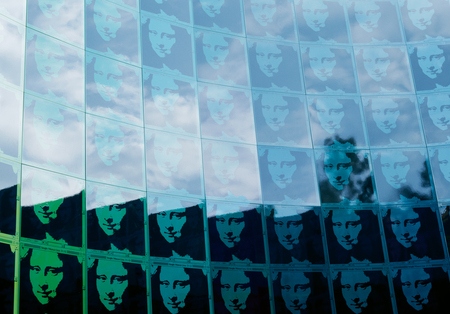
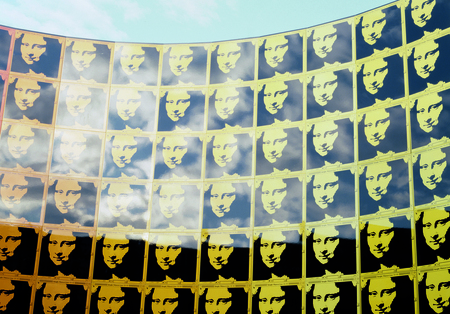
Installation Mona Lisa Time Tower (inside), Piazza Santa Lucia, Venice, 2005
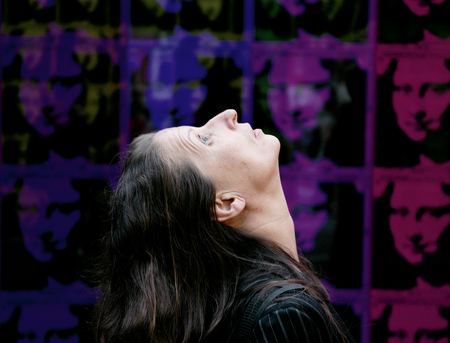
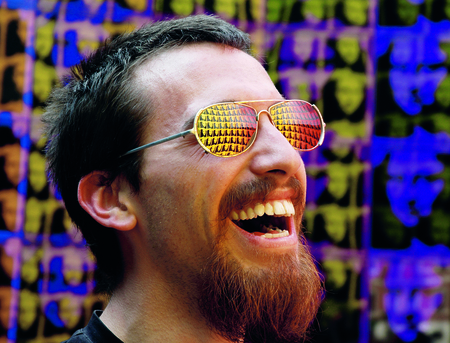
Installation Mona Lisa Time Tower (inside), Piazza Santa Lucia, Venice, 2005

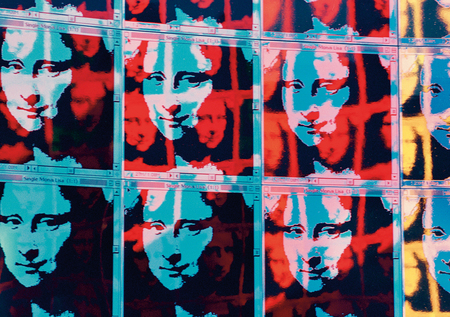
Installation Mona Lisa Time Tower (inside), Piazza Santa Lucia, Venice, 2005
Installation Mona Lisa Time Tower (inside), Piazza Santa Lucia, Venice, 2005
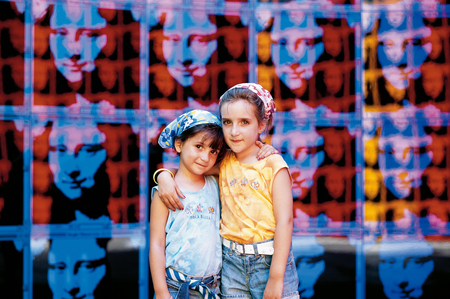
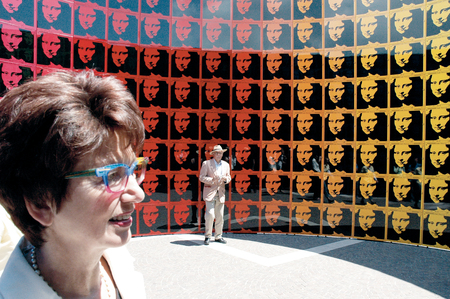
Installation Mona Lisa Time Tower (inside), Piazza Santa Lucia, Venice, 2005
Boris Groys, «Individuality as a Quote», in: George Pusenkoff, Galerie Hans Mayer, Düsseldorf — Staatliche Tretjakow Galerie, Moskau 1993
Viktor Miziano, «The Exhibition as a Quote», a.a.O. / ibid. Boris Groys, «Mencion a la individualidad», in: George Pusenkoff, Galeria Fernando Quintana, Bogotá, 1993.
Marina Bessonova, in: George Pusenkoff, Tretjakow Galerie, Avant-Garde, Moscow, 1993.
Alexander Borowski, «Nach dem Zitat der Raum», in: George Pusenkoff, Ursula-Blickle-Stiftung — Staatliches Russisches Museum, St. Peterburg 1995.
Gérard A. Goodrow, «Der Maler des Raumes», a.a.O. / ibid.
Erik Bulatov, «Das Bild lebt durch seinen Raum», a.a.O. / ibid.
Alexander Borowski, «Code-name ‘Pixel’», in: George Pusenkoff, Simply Virtual, Mannheimer Kunstverein, Das Wunderhorn, Heidelberg 1998. Boris Groys, «Ready Made Realism», a.a.O. / ibid.
Wout Nierhoff, «How Real is the Famous Unlimited Picture Pandemonium?», a.a.O. / ibid.
Alexej Parshchikov, «An Interview with George Pusenkoff», a.a.O. / ibid.
Gérard A. Goodrow, «Hommage to the Pixel», in: George Pusenkoff «Hommage to the Pixel», kulturallianzen, Cologne 1999.
Gérard A. Goodrow, «Pixel, Pixel an der Wand …», in: George Pusenkoff, Galerie Ernst Hilger, Vienna 1999.
Martin Stather, «Lara Crofts Frühstück im Freien», a.a.O. / ibid.
Ekaterina Degot, «Pilgrimage into the Land of Authenticity and Back», in: George Pusenkoff «Mona Lisa Goes Russia», Kehrer Verlag, Heidelberg 2002.
Hans Gercke, Rainer Danne, «Chance Encounters with an Umbrella?», a.a.O. / ibid.
Christoph Zuschlag, «Under Way with Mona Lisa», a.a.O. / ibid.
Ulrich Heimann, «Weißes Pixel besiegt schwarzes Pixel. Zum Wittener Wandbild George Pusenkoffs», in: George Pusenkoff «Painted and Erased», DruckVerlag Kettler, Bönen 2002.
Olga Kozlova, «Impressionismus im magnetischen Feld. Ein Gespräch mit George Pusenkoff», a.a.O. / ibid.
Christoph Zuschlag, «George Pusenkoff: Mit Pinsel und Pixel. Malerei im Computerzeitalter», a.a.O. / ibid.
Marc Scheps, «George Pusenkoff. Erased Paintings», in: George Pusenkoff «Erased or not Erased», DruckVerlag Kettler, Bönen 2003.
David Galloway, «George Pusenkoff, Ikonograf / George Pusenkoff, Iconographer», in: George Pusenkoff «Mona Lisa Travels», Kerber Verlag, Bielefeld, 2007. and «A Venetian Interlude: Mona at Rest», a.a.O. / ibid.
Ekaterina Degot, «Pilgrimage into the Land of Authenticity and Back», a.a.O. / ibid.
Marc Scheps, «Mona Lisa in the Art of the 20th Century» and «Mona Lisa Time Tower», a.a.O. / ibid.
Christoph Zuschlag, «Under Way with Mona Lisa», a.a.O. / ibid.
Ulrich Heimann, «Cosmic Procession: Mona Lisa Goes Space», a.a.O. / ibid.
Christoph Schulz, «Smile, please! A conversation with George Pusenkoff», a.a.O. / ibid.
Alexandr Jakimovitch, in: «Young Artists of the 80s», Sovjetskij Khudoznik, Moscow 1990.
Boris Groys, «Georgi Pusenkow», in: «Zeitgenössische Kunst aus Moskau», Klinkhardt & Biermann, München 1991.
Joseph Bakshtein, «George Pusenkoff», in: Europa — Europa, Das Jahrhundert der Avantgarde in Mittel- und Osteuropa, Kunst- und Ausstellungshalle der BRD, Bonn 1994.
Paul Crowther, «George Pusenkoff», in: «The Language of Twentieth-Century Art», Yale University Press, New Haven and London 1997.
Karl Ruhrberg, «George Pusenkoff», in: Ruhrberg, Schneckenburgen, Fricke, Honnef (Hgg.) «Kunst des 20. Jahrhunderts», Band 1, Taschen, Köln 1998.
Peter Krüger, «George Pusenkoff», in: «Art Bridge. Cologne — New York — Cologne», Edition Cologne, Köln 1999.
David Galloway, «George Pusenkoff», in: «Mona 2000», Deutsche Sparkassen Verlag, kunstkontor, Stuttgart 2000.
«George Pusenkoff», in: «Art Against Geography», St Petersgurg, 2000.
Martin Stather, «George Pusenkoff», in: «Nicht Ruhe geben, bis die Erde quadratisch ist», Sammlung Marli Hoppe-Ritter, Verlag Das Wunderhorn, Heidelberg 2000.
«George Pusenkoff», in: «Abstract Art in Russia. XX Century», Palace Edition, St. Petersburg 2001.
Christoph Zuschlag, «Vom Kunstzitat zur Metakunst — Kunst über Kunst im 20. Jahrhundert», in: Ekkehard Mai / Kurt Wettengl (Hgg.), «Wettstreit der Künste. Malerei und Skulptur von Dürer bis Daumier», Ausstellungskatalog München, Köln, Wolfratshausen 2002.
Mascha Gorissen, «George Pusenkoff», in: Peter Friese (Hgg.), «Art after Art», Neues Museum Weserburg Bremen und Hauschild Verlag Bremen 2002.
Ulrich Heimann, «Geöffnete Fenster — verstellte Fenster», in: Bering, Bilstein, Thurn (Hgg.), «Kultur — Kompetenz», Athena-Verlag, Oberhausen 2003.
Marc Scheps, «Mona Lisa 500», in: WAM, Moscow, 2004.
Ulrich Heimann, «Mona Lisa Goes School», in: Bering, Heimann, Littke, Nierhoff, Rooch, «Kunstdidaktik», Athena-Verlag, Oberhausen 2004.
Naomi Bodemann-Ostow, «George Pusenkoff», in: «Augenblicke. Portraits von Juden in Deutschland», Mosse Verlag, Berlin 2005.
Cristiano Tomasso, «George Pusenkoff», in: Roberto Granata «Hands of God», Il Cigno GG Edizioni, Rome 2005.
David Galloway, «Mona Lisa Goes Space», in: «51.International Art Exhibition, La Biennale di Venezia», Marsilio 2005.
Roland Prügel, «George Pusenkoff», in: «Square», Museum Ritter und Verlag Das Wunderhorn, Heidelberg 2006.
«George Pusenkoff», in: «I Believe», 2. Moscow Biennal, 2007.
Viktor Pelevin, «Interview with George Pusenkoff», in: Face to Face, Moscow, Jan. 1989.
«Georgij Pusenkov at Hans Mayer», in: Flash Art, Nr. 160, 1991.
Joseph Bakstein, «George Pusenkoff», in: Art Magazine, Moscow, Nr. 1, 1993.
«George Pusenkoff», in: Domus, Mailand, Nr. 751, August 1993.
Marina Bessonova, «Installation in the Tretjakov Gallery», in: La pensée russe, Paris, Sept. 1993.
Andrej Erofeev, Interview in: Iskusstvo Kino, Moscow, Nr. 2, 1994. Wout Nierhoff, «Im Westen was Neues», in: Das Kunst-Bulletin, September 1995. Geraldine Norman, «Manchmal ist ein Quadrat reizvoller als ein Akt», in: Die Welt, Nov. 1995.
Andrew McCathie, «What’s New…», in: The Sydney Morning Herald, Sydney, 16. Dez. 1995.
Gérard A. Goodrow, «George Pusenkoff», in: ARTnews, New York, Feb. 1995.
Alexander Borowski, «George Pusenkoff», in: Kunst Köln, Nr. 1, 1995.
Carola Nerbel, «Raum- und Zeiterfahrung», in: Passagen, Mannheim, Nr. 33, 1995. Daniel Kothenschulte, «Newtons Gesetz», in: StadtRevue, Cologne, Nr. 9, 1995.
Geraldine Norman, «What´s New Pusenkoff?», in: Independent on Sunday, London, Nr. 286, 1995.
Konstantin Akinsha, «Newton’s Blues», in: ARTnews, New York, Sept. 1995. Wout Nierhoff, «Im Namen des Volkes…», in: Kunstforum International, Bd. 133, 1996.
Louis Peters, «Bildzitat», in: Atelier, Cologne, Nr. 83, Jan./Feb. 1996. Geraldine Norman, «The Power of Borrowed Images», in: Art & Antiques, March 1996.
Andreas Freitag, «Alles nur geklaut!», in: Der Kunsthandel, Heidelberg, Nr. 8, 1996. Olga Kozlova, «Virtual Gefühl 1:1 / Virtual Feeling 1:1», in: Itogi, Moscow, Aug. 1996.
«Pusenkoff’s Matrix», in: Matador, Moscow, Nr. 8, 1996.
Olga Kozlova, «Russian Artists in Cologne», Interview in: Art Magazine, Moscow, Nr. 16, 1997.
«Files of Death», Matador, Moscow, Nr. 5, 1997. Jürgen Raab, «George Pusenkoff, Erased Rauschenberg», in: Kunstforum International, Bd.141, Juli-Sept. 1998.
David Galloway, «George Pusenkoff at kulturallianzen», in: ARTnews, New York, Jul. 1999.
Alexej Parshchikov, «In the Sign of a Dog», in: Kommentare, Moscow, Nr. 15, 1998.
Jürgen Kisters, «Lauter ausgelöschte Träume», in: Kölner Stadt Anzeiger, Nr. 207, 22./23. Dezember 2001.
Laurie Attias, «George Pusenkoff at Espace Higer, Paris», in: ARTnews, New York, May 2001.
Ulrich Heimann, «George Pusenkoff. Taktile Virtualität», in: Kölner Skizzen, Sept. 2002.
Almut Steinecke, «Schwarze Pixel irren auf weißer Leinwand», in: WAZ, 23. 03.02.
Michael Stoeber, «Kunst nach Kunst», in: Kunstforum International, Bd. 162, Nov.- Dez. 2002.
David Galloway, «Connecting the Dots», in: ARTnews, New York, Nov. 2003.
Anne-Bärbel Köhle, «Meister der Pixel», in: PrintProzess, 25/04.
Maria Kravzova, «Mona Lisa Journeys», in: Artchronika, Moscow, Nr. 3, 2004.
Olga Kabanova, «Mona Lisa Files», in: Rossijskaya Gazeta, Moscow, 31. Mai 2004.
Sergei Khodnev, «Mona Lisa smiled at Tretyakov 500 times», in: Kommersant, Moscow, 31. May 2004.
Fedor Romer, «Gioconda Ascension», in: Weekly Journal, Moscow, Nr. 3, 2004.
Alexander Zmeul, «Mona Lisas Cosmodrome», in: Kultura, Moscow, Nr. 25, 25.June — 7.July 2004.
Elisabeth Weisman, «Mona Lisa 500», in: ELLE, Moscow, June 2004 Dmitri Novik, «Mona in the Tower», in: NoMi, Moscow, Nr. 3/38 2004.
Nikolai Molok, «Mona Lisa against Bulldozer», in: Isvestia, Moscow, Oct. 2004.
Anastasia Matjushina, «George Pusenkoff, Between Analog and Digital», in: Artchronika, Moscow, Nr. 1, 2005.
Nikolai Molok, «Mona Lisa Goes Japan», in: Artchronika, Moscow, Nr. 2, 2005.
David Galloway, «A Space Odyssey for Mona Lisa», in: International Herald Tribune, 15 April 2005.
«Mona Lisa Techno-pop alla Biennale», Termini, Rom, June 2005.
David Galloway, «Mona Lisa Miles», in: ARTnews, New York, Juni 2005.
Maxim Raiskin, «Shadow of a Pixel», Interview in: 100% Krasny, St. Petersburg, Oct., 2005.
Lidia Adashevsky, «About Mona Lisa and Much Else», Interview in: DI, Moscow, Nr. 2, 2006.
George Pusenkoff, «A Letter to a Babylon Baby», in: Marie-Jo Lafontaine, «Babylon Babies», Hatje Cantz, 2003.
George Pusenkoff: The Wall, Tatjana Didenko, produziert von RTR, Moscow, 1993.
Bilder-Streit: George Pusenkoff gegen Helmut Newton, Kultur Aktuell, Peter von Carnap, produziert von SW 3, 1995.
Bilder-Streit, Teil II, Kultur Aktuell, Annete Plomin, produziert von SW 3, 1995.
George Pusenkoff, Sigrid Detloff, produziert von TransTel (Köln), 1997.
